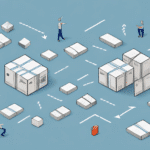On-Demand Deliveries: Revolutionizing Business Operations in 2024
In today's fast-paced and dynamic marketplace, businesses are continually seeking innovative ways to optimize their operations and enhance customer satisfaction. On-demand deliveries have emerged as a pivotal solution, transforming logistics and customer service across various industries. This article delves into the evolution of on-demand deliveries, their multifaceted benefits, the diverse types available, strategies for selecting the ideal provider, key industries reaping the rewards, supply chain optimization, cost-efficiency, and the enhancement of customer loyalty. Additionally, we will outline best practices to ensure the seamless integration of on-demand delivery services into your business model.
The Evolution of On-Demand Deliveries and Their Impact on the Business Landscape
On-demand deliveries have fundamentally altered the operational paradigms of businesses, particularly within the logistics and transportation sectors. Traditionally, companies depended on third-party logistics (3PL) providers or maintained their own delivery fleets. However, the advent of on-demand delivery platforms like Uber Eats, Postmates, and DoorDash has enabled businesses to outsource last-mile deliveries efficiently, resulting in reduced operational costs and expedited delivery times.
According to a Statista report, the global on-demand delivery market is projected to reach $40 billion by 2025, underscoring its rapid growth and significance. This surge is driven by advancements in GPS technology, real-time tracking systems, and the increasing consumer demand for swift and reliable delivery services.
Real-Time Tracking and Enhanced Transparency
One of the standout features of on-demand deliveries is the provision of real-time tracking. Leveraging GPS technology, businesses can offer customers the ability to monitor their deliveries in real-time, fostering transparency and trust. This capability not only enhances the customer experience but also minimizes anxiety related to delivery uncertainties.
Scalability and Operational Flexibility
On-demand delivery services afford businesses the flexibility to scale their operations dynamically. Whether it's accommodating seasonal spikes or expanding into new geographic territories, businesses can adjust their delivery capabilities without the complexities associated with managing an in-house fleet.
Comprehensive Benefits of On-Demand Delivery Services for Businesses
On-demand delivery services offer a plethora of advantages that can significantly bolster a business's operational efficiency and bottom line:
- Operational Efficiency: By outsourcing delivery operations, businesses can concentrate on their core functions, enhancing overall productivity.
- Cost Reduction: Eliminating the need for a dedicated delivery fleet reduces expenditures related to vehicle maintenance, fuel, and labor.
- Real-Time Visibility: Enhanced tracking capabilities enable businesses to monitor delivery performance and make informed decisions promptly.
- Flexibility: The ability to adapt delivery volumes and routes as needed ensures responsiveness to market demands.
Furthermore, with the exponential growth of e-commerce, consumers increasingly expect faster and more reliable delivery options. On-demand delivery services cater to these expectations by offering same-day or even within-the-hour delivery solutions, providing businesses with a competitive edge.
Types of On-Demand Delivery Services: Tailoring Solutions to Business Needs
Understanding the various on-demand delivery options is crucial for businesses to select the most appropriate service for their specific requirements:
Same-Day Delivery
Same-day delivery ensures that orders placed within a specific timeframe are delivered on the same day. This service is particularly beneficial for time-sensitive products such as electronics, fashion items, and perishable goods.
Next-Day Delivery
Next-day delivery offers a balance between speed and cost, making it suitable for non-urgent orders. This service is widely used by retailers looking to provide reliable delivery without the premium cost of same-day options.
Scheduled Delivery
Scheduled delivery allows customers to choose a convenient date and time for their deliveries. This flexibility is ideal for large or bulky items that require special handling or installation.
Real-Time Fulfillment
Real-time fulfillment involves the immediate processing and delivery of orders as they are received. This approach is advantageous for businesses needing rapid inventory turnover and minimal storage requirements.
Selecting the Optimal On-Demand Delivery Provider for Your Business
Choosing the right on-demand delivery partner is paramount to maximizing the benefits of this service. Consider the following factors when making your selection:
- Reputation and Reliability: Opt for providers with a proven track record of timely and accurate deliveries.
- Service Coverage: Ensure the provider covers the geographic areas relevant to your business operations.
- Cost Structure: Analyze the pricing models to find a provider that aligns with your budget and offers transparent pricing.
- Technology Integration: The provider should offer seamless integration with your existing systems, including real-time tracking and reporting tools.
- Customer Support: Responsive and effective customer service is essential for resolving any delivery issues promptly.
Evaluate potential providers based on these criteria to ensure a harmonious and efficient partnership that supports your business objectives.
Industries Benefiting the Most from On-Demand Delivery Services
On-demand delivery services are versatile and can significantly enhance operations across various sectors:
Retail and E-Commerce
Retailers and e-commerce platforms leverage on-demand deliveries to offer fast and reliable shipping options, increasing customer satisfaction and repeat business.
Healthcare
Pharmaceutical companies and healthcare providers utilize on-demand delivery for the swift transport of medical supplies, prescription medications, and essential equipment, ensuring timely patient care.
Food and Beverage
Restaurants and grocery stores depend on on-demand deliveries to meet the demand for quick and convenient food delivery services, catering to the growing trend of online ordering.
Logistics and Supply Chain
Logistics companies integrate on-demand delivery solutions to optimize route planning, reduce delivery times, and enhance overall supply chain efficiency.
Optimizing Your Supply Chain with On-Demand Delivery Solutions
Integrating on-demand delivery services can streamline supply chain operations in several ways:
- Reduced Lead Times: Faster delivery services minimize the time between order placement and receipt, enhancing inventory turnover rates.
- Inventory Management: Just-in-time delivery reduces the need for extensive inventory storage, lowering storage costs and minimizing waste.
- Enhanced Flexibility: The ability to scale delivery operations up or down based on demand fluctuations ensures operational agility.
- Improved Visibility: Real-time tracking provides comprehensive oversight of the supply chain, facilitating proactive issue resolution.
By leveraging these advantages, businesses can achieve a more resilient and efficient supply chain, better positioned to respond to market dynamics.
Cost-Efficiency of On-Demand Deliveries: Maximizing Savings
One of the most compelling benefits of on-demand delivery services is their potential to reduce operational costs:
Lower Operational Expenses
Outsourcing delivery operations eliminates costs associated with maintaining a private fleet, including vehicle maintenance, fuel, and driver salaries.
Flexible Pricing Models
Many on-demand delivery providers offer scalable pricing options, allowing businesses to pay based on usage and demand, which can lead to significant savings compared to fixed delivery costs.
Reduced Inventory Costs
Adopting just-in-time delivery practices minimizes the need for large inventory holdings, decreasing storage costs and reducing the risk of overstocking or obsolescence.
According to a Forbes article, businesses can save up to 30% in logistics costs by integrating on-demand delivery solutions, highlighting the financial advantages of this approach.
Enhancing Customer Satisfaction and Loyalty through On-Demand Deliveries
Providing reliable and swift delivery options is crucial for fostering customer satisfaction and loyalty:
Improved Delivery Experience
On-demand deliveries ensure that customers receive their orders promptly, enhancing their overall shopping experience and increasing the likelihood of repeat purchases.
Transparency and Trust
Real-time tracking and timely updates build trust, as customers are kept informed about the status of their deliveries, reducing anxiety related to order fulfillment.
Customization and Flexibility
Offering flexible delivery options, such as choosing specific delivery windows, caters to individual customer preferences, further elevating satisfaction levels.
A survey by PwC indicates that 73% of consumers are more likely to remain loyal to a brand that offers fast and reliable delivery services.
Best Practices for Implementing Efficient On-Demand Delivery Services
To maximize the benefits of on-demand deliveries, businesses should adopt the following best practices:
Select a Reputable Provider
Partner with delivery services that have a strong track record of reliability and customer satisfaction. Conduct thorough due diligence to assess their performance history.
Leverage Technology
Utilize advanced tracking and management tools to monitor deliveries in real-time, allowing for swift responses to any issues that may arise.
Maintain Clear Communication
Establish open lines of communication with your delivery provider to ensure alignment on expectations, protocols, and any changes in delivery requirements.
Analyze and Optimize
Regularly review delivery performance metrics to identify areas for improvement. Use data-driven insights to optimize routes, reduce delivery times, and enhance overall efficiency.
Ensure Compliance and Training
Ensure that your delivery partners comply with all relevant regulations and that they are adequately trained to handle your products, especially if they are perishable or require special handling.
In conclusion, on-demand delivery services present a transformative opportunity for businesses aiming to enhance operational efficiency, reduce costs, and elevate customer satisfaction. By understanding the various types of delivery services, selecting the right provider, and adhering to best practices, businesses can effectively integrate on-demand deliveries into their operations, driving growth and maintaining a competitive edge in the evolving market landscape.




















